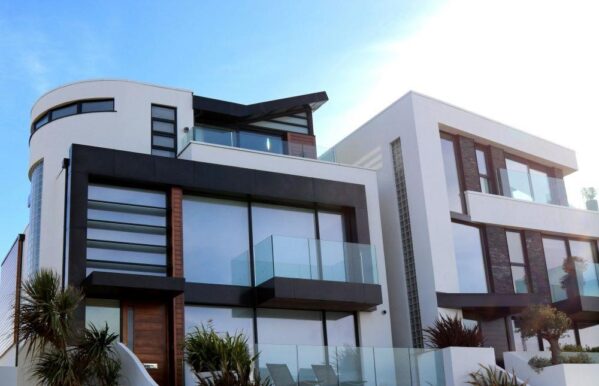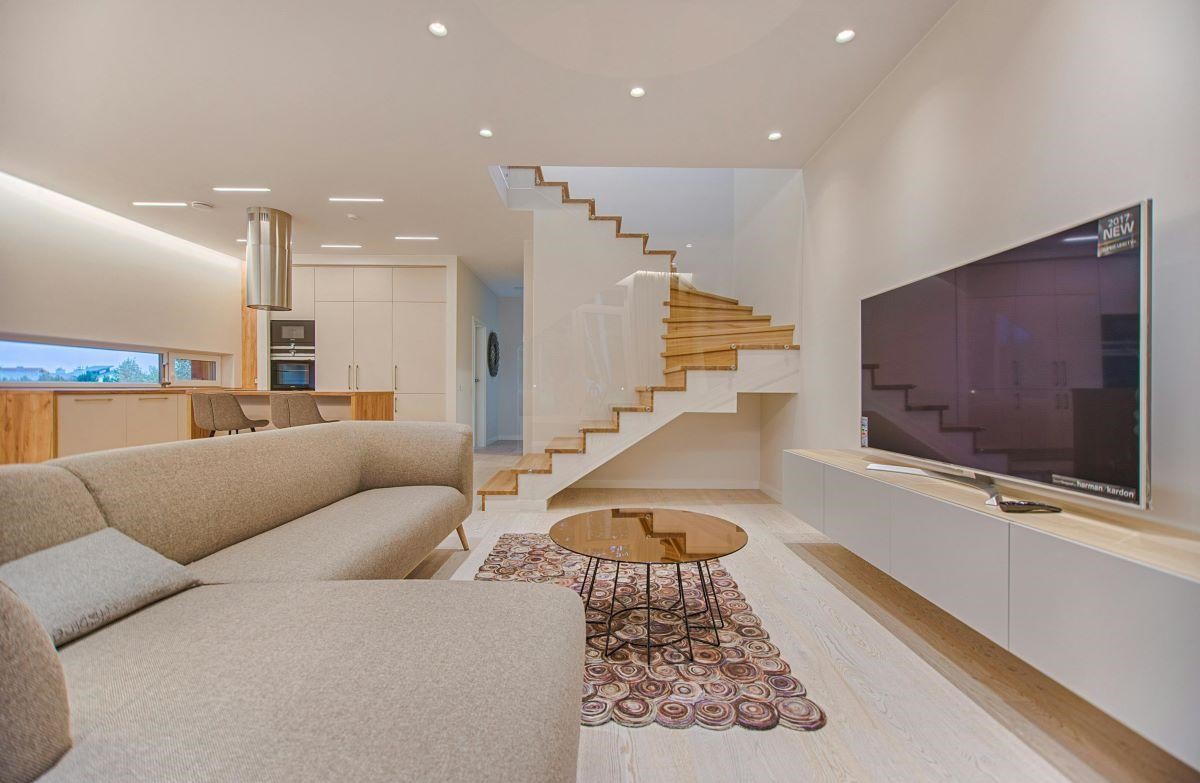The rise of smart homes represents a significant transformation in modern living, revolutionizing how we interact with our homes. These technologically advanced homes use smart devices to enhance convenience, security, and energy efficiency. As an illustration, smart homes integrate systems like thermostats, lighting, and security cameras that can be controlled remotely or automated according to your preferences. In this article, we will explore key features, the impact on energy efficiency, and essential considerations to keep in mind before investing in a smart home.
Key Features of The Rise of Smart Homes
Understanding the key features of the rise of smart homes is essential for making an informed decision. At the heart of smart homes are home automation systems, which allow you to control various devices from a central interface. Common smart devices include thermostats that adjust temperatures based on your daily routines, security cameras that offer real-time monitoring, and smart lights that can be programmed or controlled remotely. Another key point is ensuring integration and compatibility among devices. For example, a smart thermostat should work seamlessly with your smart lights and security system. In short, a user-friendly interface is vital to maximizing the benefits of these technologies and making daily management easier.

Cost and Budgeting for a Smart Home
Investing in a smart home requires careful consideration of costs. Another key point is balancing the initial expenses with the long-term benefits of energy savings and convenience. Hence, it’s important to establish a clear budget and explore financing options or potential incentives for smart home technology. The cost of smart home systems can vary widely based on the complexity and number of devices you choose. With this in mind, evaluating the return on investment is important. In short, while the upfront costs might be significant, the potential savings on energy bills and increased convenience can make the investment worthwhile. Also, moving to a new home will require funds as well.
For instance, when transitioning to a new smart home, especially if relocating from one state to another, such as from Florida to California, the relocation can be a major financial and logistical consideration. The distance between these states presents unique challenges, from safely transporting your possessions to managing the intricate details of the move. That is where hiring professional packing services becomes essential, even if it means adding to your budget. In truth, rather than stressing how to pack delicate smart home devices or larger items, it’s far more efficient to let experts handle this task, making it worth the cost in the long run. Their specialized services ensure everything from your valuable electronics to everyday essentials arrives safely from Florida to California and is in working order.

The Impact of Smart Homes on Energy Efficiency
One of the most significant advantages of smart homes is their energy efficiency. Energy-efficient smart devices are designed to reduce power consumption while maintaining comfort and security. In truth, smart thermostats and LED lights can substantially save energy bills. Smart thermostats, for instance, learn your schedule and adjust heating and cooling accordingly, reducing unnecessary energy use. Similarly, smart lighting systems can automatically turn off when a room is unused. Hence, these features lower utility bills and contribute to environmental sustainability by reducing your carbon footprint.

Solar Panels and Smart Home Integration
Integrating solar panels with smart home technology is a natural and highly beneficial combination. Solar panels provide a renewable energy source that powers your smart devices, improving efficiency and sustainability. By incorporating solar panels into a smart home system, energy management becomes more effective, allowing you to optimize the use of renewable energy. For instance, a smart home system can track solar energy production and consumption in real time, ensuring that energy is used more efficiently, which results in greater savings.
Quality and vendor reputation plays a critical role when selecting solar panels. Companies like SunPower, LG, and Panasonic are well-regarded for their high-quality solar panels, which are known for durability and efficiency. For example, SunPower’s Maxeon panels offer up to 22.8% efficiency, one of the highest on the market. These panels also come with a 25-year warranty, providing long-term peace of mind. Panasonic’s EverVolt series also stands out for reliability, boasting an impressive efficiency rate of 21.7% and similar warranties.
In terms of installation, the number of solar panels you’ll need for your home depends on several factors: the size of your roof, your household’s energy consumption, and the average sunlight hours in your location. As a general estimate, a typical home requires around 20-25 solar panels to meet energy needs fully. A standard 6 kW system would produce around 9,000 kWh of electricity annually, which is suitable for an average household.
The lifetime of solar panels is typically 25-30 years, though advancements in technology mean that modern panels may last even longer. Investing in high-quality panels with strong warranties is essential as they offer better energy output over time and require less maintenance. Regarding integration, brands like Tesla’s Powerwall, Enphase, and SolarEdge offer solutions that sync solar panels with smart home energy systems, allowing homeowners to monitor, store, and manage their energy more effectively.
A smart thermostat like Nest or Ecobee can be paired with your solar system, allowing for even more precise control over energy consumption. For example, during peak sunlight hours, your thermostat can adjust to use solar energy, reducing dependence on the grid. Many smart home platforms offer solar energy monitoring through apps, which can help you make informed decisions about your energy use in real-time.
Security Considerations for Smart Homes
While smart homes offer numerous benefits, they also introduce new security challenges. Common security risks include vulnerabilities in smart devices that cybercriminals could exploit. In contrast, smart technology can enhance home security through remote surveillance and automated alerts. Ensure that all devices are regularly updated, and use secure passwords to protect your smart home. Similarly, consider investing in comprehensive security systems with encryption and multi-factor authentication. It’s essential to stay informed about potential security threats and take proactive measures to safeguard your smart home network.
Choosing the Right Smart Home System
Selecting the right smart home system requires careful consideration of your specific needs and preferences. Another key point is evaluating the compatibility of various devices with your existing home infrastructure. With this in mind, assess whether you prefer a comprehensive system from a single manufacturer or a mix-and-match approach with different brands. Similarly, consider the level of control and customization you want—some systems offer advanced automation and integration options, while others provide more basic functionalities. In contrast, ensure that any smart home system offers strong customer support and a user-friendly setup. In short, taking the time to research and choose the right system can greatly enhance your experience and satisfaction with your smart home investment.
Future Trends in Smart Home Technology
Looking ahead, the future of smart home technology promises exciting developments. Similarly, advancements in energy efficiency and sustainability are likely to continue shaping the industry. Emerging technologies include greater integration of artificial intelligence (AI) and machine learning, enabling even smarter and more intuitive systems. Predictions for the next decade suggest that smart homes will become increasingly interconnected, offering enhanced automation and improved user experiences. Besides, the ongoing evolution of smart home technology will likely introduce new features and capabilities that further enhance everyday living.
Making the Smart Home Decision
The rise of smart homes offers numerous benefits and opportunities to enhance your living environment. Understanding the key features, energy efficiency advantages, and future trends will help you make a well-informed decision. Hence, evaluating your needs, budget, and the potential impact of smart home technology on your lifestyle is essential. Another key point is considering professional assistance when moving to a new smart home. When carefully weighing all factors and seeking expert help, you can enjoy a connected, efficient, and secure living space.


